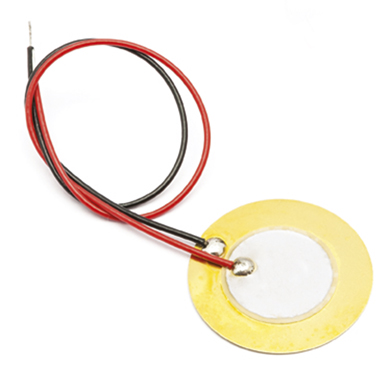Crossref Citations
This article has been cited by the following publications. This list is generated based on data provided by
Crossref.
Paterson, Alisa R.
Nagata, Hajime
Tan, Xiaoli
Daniels, John E.
Hinterstein, Manuel
Ranjan, Rajeev
Groszewicz, Pedro B.
Jo, Wook
and
Jones, Jacob L.
2018.
Relaxor-ferroelectric transitions: Sodium bismuth titanate derivatives.
MRS Bulletin,
Vol. 43,
Issue. 8,
p.
600.
Rödel, Jürgen
and
Li, Jing-Feng
2018.
Lead-free piezoceramics: Status and perspectives.
MRS Bulletin,
Vol. 43,
Issue. 8,
p.
576.
Radan, Kristian
Kmet, Brigita
Drnovšek, Silvo
Prah, Uroš
Rojac, Tadej
and
Malič, Barbara
2018.
Mechanochemically-Assisted Synthesis of Lead-Free Piezoelectric CaZrO3-Modified (K,Na,Li)(Nb,Ta)O3-Solid Solution.
Ceramics,
Vol. 1,
Issue. 2,
p.
304.
Sheeraz, Muhammad
Khaliq, Abdul
Ullah, Aman
Han, Hyoung-Su
Khan, Aurangzeb
Ullah, Amir
Kim, Ill Won
Kim, Tae Heon
and
Ahn, Chang Won
2019.
Stress driven high electrostrain at low field in incipient piezoelectrics.
Journal of the European Ceramic Society,
Vol. 39,
Issue. 15,
p.
4688.
K.V., Lalitha
Koruza, Jurij
and
Rödel, Jürgen
2019.
Mechanical versus electromechanical hardening in relaxor ferroelectric Na1/2Bi1/2TiO3-BaTiO3 with ZnO inclusions.
Scripta Materialia,
Vol. 169,
Issue. ,
p.
92.
Mishra, Anupam
Khatua, Dipak Kumar
De, Arnab
and
Ranjan, Rajeev
2019.
Off-stoichiometry, structural-polar disorder and piezoelectricity enhancement in pre-MPB lead-free Na0.5Bi0.5TiO3-BaTiO3 piezoceramic.
Journal of Applied Physics,
Vol. 125,
Issue. 21,
Khobragade, Sandip
Devanuri, Jaya Krishna
and
Patel, Satyanarayan
2019.
Temperature dependent dynamics hysteresis scaling of Ba0.85Ca0.15Ti0.9–xSnxZr0.10O3 bulk ferroelectric ceramics.
Phase Transitions,
Vol. 92,
Issue. 11,
p.
960.
Thong, Hao-Cheng
Zhao, Chunlin
Zhou, Zhen
Wu, Chao-Feng
Liu, Yi-Xuan
Du, Zong-Zheng
Li, Jing-Feng
Gong, Wen
and
Wang, Ke
2019.
Technology transfer of lead-free (K, Na)NbO3-based piezoelectric ceramics.
Materials Today,
Vol. 29,
Issue. ,
p.
37.
Li, Yingwei
Liu, Yixuan
Öchsner, Paul-Erich
Isaia, Daniel
Zhang, Yichi
Wang, Ke
Webber, Kyle G.
Li, Jing-Feng
and
Rödel, Jürgen
2019.
Temperature dependent fracture toughness of KNN-based lead-free piezoelectric ceramics.
Acta Materialia,
Vol. 174,
Issue. ,
p.
369.
Zhang, Ji
Wang, Rui-Xue
Li, Ling
Wu, Jia-Yang
Cui, Yu-Shuang
Gu, Zheng-Bin
Zhang, Haibo
Zhu, Ming-Wei
Zhang, Shan-Tao
and
Yang, Bin
2019.
Highly enhanced thermal stability in quenched Na0.5Bi0.5TiO3-based lead-free piezoceramics.
Journal of the European Ceramic Society,
Vol. 39,
Issue. 15,
p.
4705.
Zhang, Haibo
Ma, Weigang
Xie, Bing
Zhang, Ling
Dong, Shuxiang
Fan, Pengyuan
Wang, Ke
Koruza, Jurij
and
Rödel, Jürgen
2019.
(Na1/2Bi1/2)TiO3‐based lead‐free co‐fired multilayer actuators with large strain and high fatigue resistance.
Journal of the American Ceramic Society,
Vol. 102,
Issue. 10,
p.
6147.
Lee, Tae-Gon
and
Nahm, Sahn
2019.
Review of Sintering Technologies, Structural Characteristics, and Piezoelectric Properties of NKN-Based Lead-Free Ceramics.
Transactions on Electrical and Electronic Materials,
Vol. 20,
Issue. 5,
p.
385.
Condurache, Oana Andreea
Radan, Kristian
Prah, Uroš
Otoničar, Mojca
Kmet, Brigita
Kapun, Gregor
Dražić, Goran
Malič, Barbara
and
Benčan, Andreja
2019.
Heterogeneity Challenges in Multiple-Element-Modified Lead-Free Piezoelectric Ceramics.
Materials,
Vol. 12,
Issue. 24,
p.
4049.
Guo, Fengyu
Cai, Wei
Gao, Rongli
Fu, Chunlin
Chen, Gang
Deng, Xiaoling
Wang, Zhenhua
and
Zhang, Qianwei
2019.
Microstructure, Enhanced Relaxor-Like Behavior and Electric Properties of (Ba0.85Ca0.15)(Zr0.1−xHfxTi0.9)O3 Ceramics.
Journal of Electronic Materials,
Vol. 48,
Issue. 5,
p.
3239.
Luo, Wenqin
2019.
EFFECT OF MnO₂ ON THE ELECTRICAL PROPERTIES OF 0.96KNNT-0.04BNZ LEAD-FREE PIEZOELECTRIC CERAMICS.
Ceramics - Silikaty,
p.
399.
Verma, Anita
Yadav, Arun Kumar
Kumar, Sunil
Srihari, Velaga
Jangir, Ravindra
Poswal, Himanshu K.
Biring, Sajal
and
Sen, Somaditya
2019.
Structural, thermally stable dielectric, and energy storage properties of lead-free (1 − x)(Na0.50Bi0.50)TiO3 − xKSbO3 ceramics.
Journal of Materials Science: Materials in Electronics,
Vol. 30,
Issue. 16,
p.
15005.
Tao, Chun-Wei
Wang, Rui-Xue
Li, Ling
Yuan, Xin
Zhang, Ji
Cui, Yu-Shuang
and
Zhang, Shan-Tao
2019.
Bi(Zn0.5Ti0.5)O3 induced domain evolution and its effect on electrical property and thermal stability of 0.8Bi0.5Na0.5TiO3-0.2Bi0.5K0.5TiO3 ceramics.
Journal of Alloys and Compounds,
Vol. 810,
Issue. ,
p.
151942.
Fujii, Ichiro
Ueno, Shintaro
and
Wada, Satoshi
2019.
Effect of sintering temperature on the growth of (K0.5Na0.5)NbO3 single crystals fabricated by the solid-state crystal growth method.
Japanese Journal of Applied Physics,
Vol. 58,
Issue. SL,
p.
SLLD01.
Yu, Yungang
Li, Jingchuan
Dai, Xiaowei
Yi, Yunhe
Pan, Yongqi
He, Caiwang
Liu, Yunyi
Liu, Xiaokui
and
Chen, Yi
2019.
Composition-driven phase evolution and piezoelectric properties of (1−x)(K0.48Na0.52)0.96Li0.04Nb0.95Sb0.05O3−xBi0.5 (Na0.84K0.16)0.48Ba0.02ZrO3 lead-free ceramics.
Materials Research Express,
Vol. 6,
Issue. 10,
p.
106322.
Butee, Sandeep
Kambale, K.R.
Ghorpade, Ajinkya
Halikar, Abhay
Gaikwad, Rahul
and
Panda, Himanshu
2019.
Significant improvement in Curie temperature and piezoelectric properties of BaTiO3with minimum Pb addition.
Journal of Asian Ceramic Societies,
Vol. 7,
Issue. 4,
p.
407.



